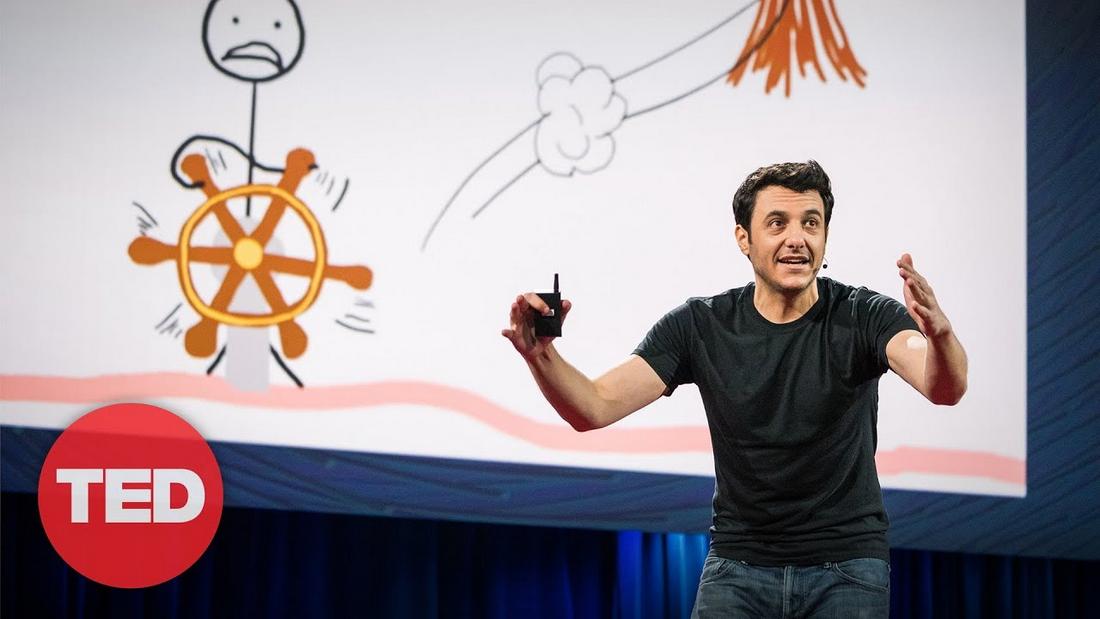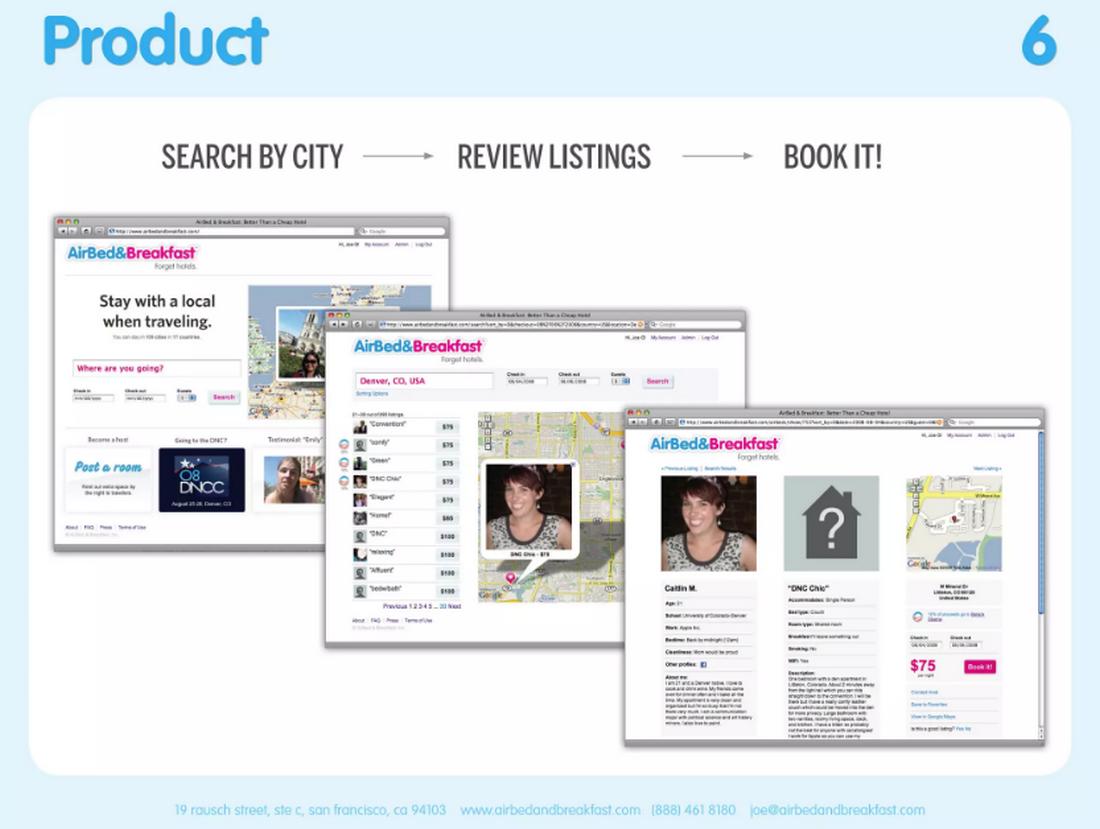For years, traditional presentations have relied on static slides filled with bullet points, pie charts, and dense text. While these slides can convey information, they often lack engagement.
Today, a major shift is happening in the way presentations are designed—narrative-driven presentations are replacing static slides, transforming presentations into immersive storytelling experiences.
According to psychologist Jerome Bruner, people are 22 times more likely to remember information and facts presented in a story.
Instead of presenting a list of facts, modern slide decks guide audiences through a structured story, using visuals, pacing, and emotional appeal to make the message more impactful.
In this article, we explore why storytelling is the future of presentations, how brands and professionals are adopting this approach, and how you can craft narrative-driven presentations that captivate your audience.
Why the Shift Toward Storytelling in Presentations?
(Source: Inside the mind of a master procrastinator)
Storytelling is one of the most powerful ways to communicate ideas. Humans are naturally drawn to stories because they create emotional connections, making information easier to remember.
While static slides provide information, narrative-driven presentations take audiences on a journey, helping them experience the message rather than just reading it.
Here are a few reasons why storytelling is becoming the preferred approach:
Increased Audience Engagement
Traditional slide decks often overload audiences with information, causing disengagement.
According to research, stories trigger the release of oxytocin, the hormone related to trust and empathy. As a result, presentations that use storytelling see 2x higher engagement from audiences.
Narrative-driven presentations, on the other hand, build suspense, introduce characters, and create moments of surprise—keeping the audience engaged from start to finish.
Better Information Retention
A well-crafted narrative helps audiences recall key points long after the presentation is over.
“After a presentation, 63% of attendees remember stories. Only 5% remember statistics.” – Made to Stick
Emotional Connection
Facts inform, but emotions persuade. Storytelling taps into emotions, whether it’s excitement, curiosity, or empathy, making the audience more likely to connect with and respond to the message.
More Persuasive Communication
Whether pitching an idea, selling a product, or presenting research, storytelling enhances persuasion. By framing data within a compelling story, presenters can make complex ideas more accessible and convincing.
How Narrative-Driven Presentations Work
(Source: How to make stress your friend)
Unlike traditional presentations, which often follow a rigid structure (introduction, key points, conclusion), narrative-driven presentations unfold like a story.
They typically include:
1. A Strong Opening (The Hook)
Great stories begin with a hook—something that grabs attention immediately. Instead of opening with an agenda slide, consider starting with:
- A surprising fact
- A personal anecdote
- A thought-provoking question
- A compelling visual
This sets the stage for the story and makes the audience curious about what’s coming next.
2. A Problem or Challenge (The Conflict)
Every great story has a challenge or conflict. In presentations, this could be a market problem, a gap in knowledge, or a business challenge.
Presenting a problem early on creates tension, encouraging the audience to stay engaged to see how it’s resolved.
3. A Journey Toward a Solution
Once the problem is established, the presentation guides the audience through the journey of solving it.
This could involve data, case studies, or product demonstrations—framed within a logical, engaging flow rather than as isolated facts.
4. A Memorable Conclusion
Rather than ending with a generic “Thank You” slide, a narrative-driven presentation ends on a strong, memorable note—often with a call to action or an inspiring vision for the future.
Key Elements of Story-Driven Slide Decks
(Source: Airbnb Pitch Deck from 2008 seed funding round)
Shifting from static to storytelling presentations requires more than just changing the structure—it requires a shift in design and delivery.
Here are key elements that make modern presentations more engaging:
1. Visually Driven Slides
Instead of text-heavy slides, narrative-driven presentations rely on high-impact visuals—compelling images, infographics, and videos that complement the story rather than overwhelm it.
2. Minimal Text
In traditional presentations, slides often function as speaker notes. In narrative-driven decks, text is minimized, allowing the presenter to speak naturally rather than reading from the slides.
This enhances audience engagement and makes the delivery feel more conversational.
3. Strategic Use of Animation
Animations and transitions can help guide the audience through the story—revealing information step by step, emphasizing key points, and maintaining visual interest.
However, they should be used strategically to avoid distraction.
4. Data as a Storytelling Tool
Numbers alone don’t tell a story—context does. Rather than just displaying charts and statistics, effective presentations frame data within a narrative, showing why the numbers matter and what they mean in real-world scenarios.
5. A Conversational, Natural Tone
Storytelling presentations aren’t just about visuals—they also require authentic delivery. Presenters should aim for a conversational tone, using natural speech patterns rather than reading from a script.
How to Transition from Static to Storytelling

If you’re used to creating traditional slide decks filled with bullet points and data-heavy slides, transitioning to a narrative-driven approach might feel unfamiliar at first.
However, by focusing on storytelling techniques, simplifying your content, and embracing engaging visuals, you can transform your presentations into memorable experiences.
Here’s a step-by-step guide to shifting from static presentations to storytelling-driven slide decks:
1. Start with a Clear Storyline
Before creating slides, outline your presentation like a story. Identify your main message, the problem you’re solving, and the journey you want to take the audience on.
A strong storyline helps keep the presentation focused and engaging.
- Begin with a compelling hook: Start with a surprising fact, a thought-provoking question, or a personal anecdote.
- Introduce a problem or challenge that resonates with your audience.
- Guide the audience through the journey toward a solution, using examples, case studies, or step-by-step explanations.
- End with a clear takeaway, whether it’s an inspiring message, a call to action, or a powerful insight.
2. Reduce Text, Increase Visuals
Traditional slide decks often include too much text, making them overwhelming and unengaging.
In a storytelling-driven presentation, the slides should complement the speaker rather than act as a script.
- Replace text-heavy slides with strong visuals, such as high-quality images, infographics, and diagrams that help illustrate your key points.
- Use minimal text—think one main idea per slide rather than long paragraphs.
- Highlight keywords and essential phrases instead of full sentences.
- Use storyboards to plan out how the slides flow visually, just like a movie director would for a film.
3. Make It Relatable
Audiences connect with stories, not statistics. Even if your presentation involves data, find ways to make it relatable.
- Instead of saying, “Our customer retention rate increased by 25%,” tell the story of a real customer who benefited from your product or service.
- Use analogies and metaphors to explain complex ideas in a way that resonates with the audience.
- Tap into emotions—whether it’s excitement, curiosity, or empathy—to make your presentation more impactful.
4. Focus on Delivery
A great narrative-driven presentation isn’t just about the slides—it’s about how you tell the story. Your delivery plays a huge role in engaging the audience.
- Speak naturally: Avoid reading directly from slides. Instead, use the slides as prompts and focus on conversational delivery.
- Vary your tone and pacing: Slow down for dramatic effect, speed up when explaining an exciting breakthrough, and emphasize key points with pauses.
- Make eye contact and engage with the audience: Whether in person or virtual, interaction keeps people invested in your message.
5. Use Transitions to Guide the Story
Just like in a well-written novel or movie, transitions help the audience follow the flow of the story.
- Use section breaks to signal a shift in the narrative (e.g., “Now that we understand the challenge, let’s explore the solution”).
- Apply smooth slide transitions instead of abrupt changes to keep the experience cohesive.
- Use animations strategically to reveal information step by step rather than displaying everything at once.
6. Create Moments of Suspense and Surprise
One of the hallmarks of great storytelling is keeping the audience engaged through curiosity and unexpected twists.
- Pose questions that make the audience think before revealing the answer.
- Introduce problems before solutions to create tension and intrigue.
- Use unexpected facts, shocking statistics, or humorous moments to capture attention.
7. Tailor the Story to Your Audience
A great story is only effective if it resonates with your audience. Understanding who you’re speaking to can help you craft a more impactful presentation.
- Adjust your tone and language based on whether your audience is technical, corporate, or casual.
- Choose examples and case studies that align with their interests and experiences.
- If presenting to a diverse audience, ensure your storytelling is inclusive and relatable to different backgrounds.
8. Incorporate Data Without Overwhelming the Audience
Data is powerful, but too many numbers on a slide can make an audience tune out. Instead of simply displaying raw data:
- Frame statistics as part of a narrative: For example, “Three years ago, we had a retention rate of just 60%. Today, it’s 85%—thanks to our new customer experience strategy.”
- Use infographics, charts, and visual storytelling to make numbers more digestible.
- Highlight the key takeaway rather than overwhelming the audience with unnecessary details.
9. Test Engagement Before the Final Presentation
Before presenting to a large audience, test your slides with a smaller group. Ask for feedback on:
- Whether the story was clear and engaging.
- If there were any moments where attention seemed to drift.
- Whether the visuals supported the message effectively.
Testing your presentation in advance allows you to fine-tune weak areas and ensure maximum impact.
10. Close with a Powerful Ending
The way you end a presentation determines how well the audience remembers it. Instead of finishing with a generic “Thank You” slide:
- End with a memorable final thought, whether it’s a bold statement, a call to action, or a thought-provoking question.
- Reinforce the main takeaway in a way that sticks with the audience.
- Inspire action by encouraging next steps, whether it’s visiting a website, making a decision, or changing a perspective.
Conclusion
The shift from static slides to narrative-driven presentations is reshaping how ideas are communicated. By moving beyond bullet points and embracing storytelling, visuals, and audience engagement, modern presentations can leave a lasting impact.
Whether you’re pitching a product, sharing research, or leading a business meeting, a story-driven approach will not only make your message clearer but also more memorable and persuasive.
The future of presentations isn’t about listing information—it’s about telling a compelling story.



0 Commentaires